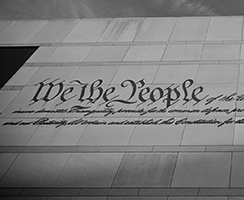Summary
In Hazelwood School District v. Kuhlmeier, the Supreme Court clarified some of the limits on First Amendment rights for public school students. In 1983, a school principal censored two articles in a student newspaper discussing the issues of divorce and teenage pregnancy. Members of the school newspaper brought a First Amendment challenge to the principal’s actions. Rejecting the students’ challenge, the Supreme Court—in a five-to-three decision—ruled that the principal could block the publication of an article in a student newspaper as long as the decision was “reasonably related to legitimate pedagogical concerns.” While Tinker v. Des Moines Independent School District dealt with the ability of educators to silence a student’s personal expression occurring on the school premises, Hazelwood concerned the authority of educators over school-sponsored publications that students, parents, and members of the public “might reasonably perceive to bear the imprimatur of the school.”





